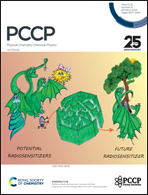Unraveling CO adsorption behaviors and its poisoning effects on ZrCo surface†
Abstract
Theoretical calculations are performed to elucidate the adsorption behaviors and poisoning effects of CO gas on the ZrCo surface, which drastically limits its application in hydrogen isotopic storage. Specifically, the ionic Zr–Co bond on the surface leads to unique CO adsorption structures on different sites. The CO molecule tends to prefer a tilted adsorption configuration on the Co–Co bridge site. The electronic structures, charge distributions, and bonding characteristics are further explored to study the CO adsorption properties, which obey the electron density donation and back-donation mechanism. For different CO coverages, the stepwise adsorption energies of CO increase with the increasing of coverage, reaching the saturated coverage at nCO = 11. Then, the effects of temperature and partial pressure on CO coverage are evaluated using atomic thermodynamics. The computed phase diagram shows that the ZrCo(110) surface has a stable coverage of nCO = 6 at ambient temperature under ultrahigh vacuum conditions. The pre-adsorbed CO molecules lead to the charge redistribution and the d-band center downshift on the surface, which significantly affect hydrogen adsorption and dissociation. Our results provide insights into the poisoning mechanisms of the impurity gas on ZrCo alloys, which can be beneficial for designing high-performance ZrCo-based alloys with improved poisoning tolerance.



 Please wait while we load your content...
Please wait while we load your content...